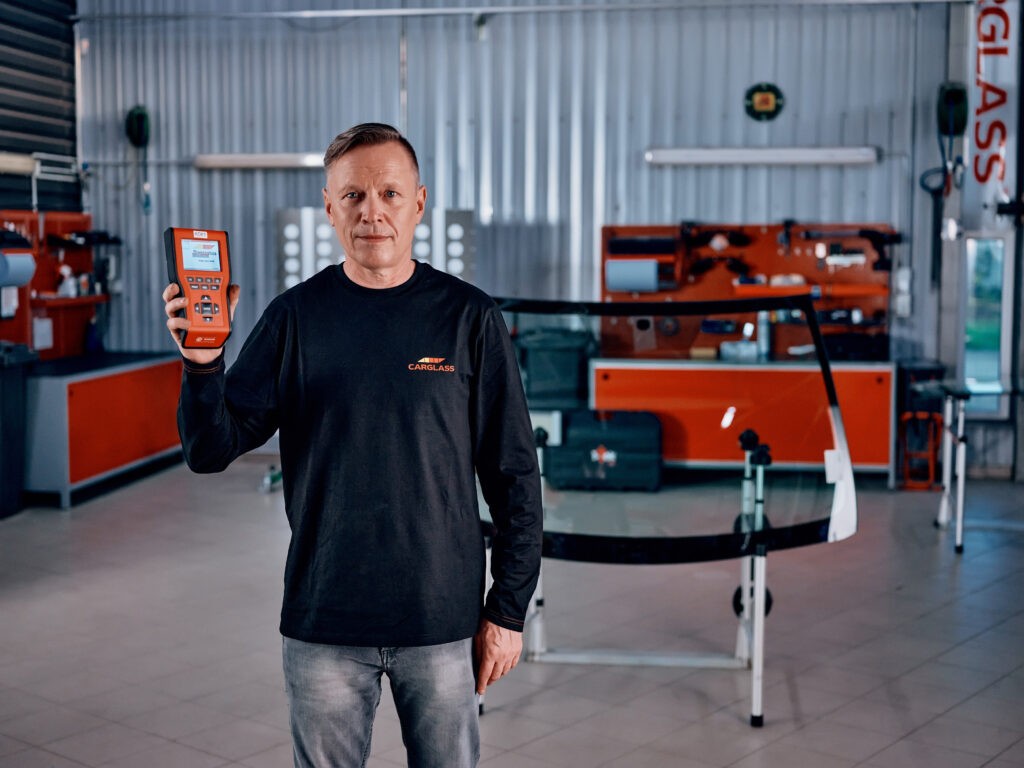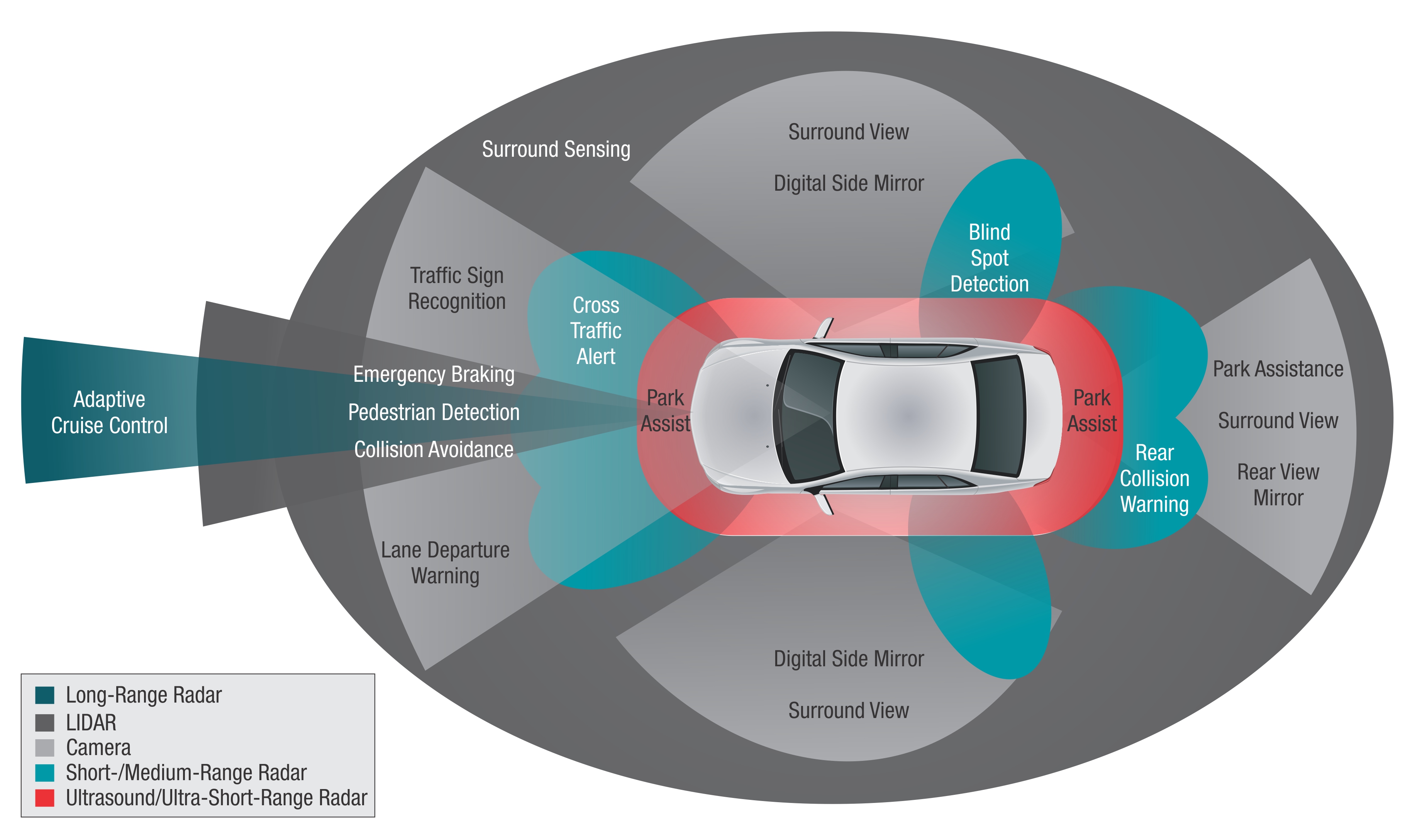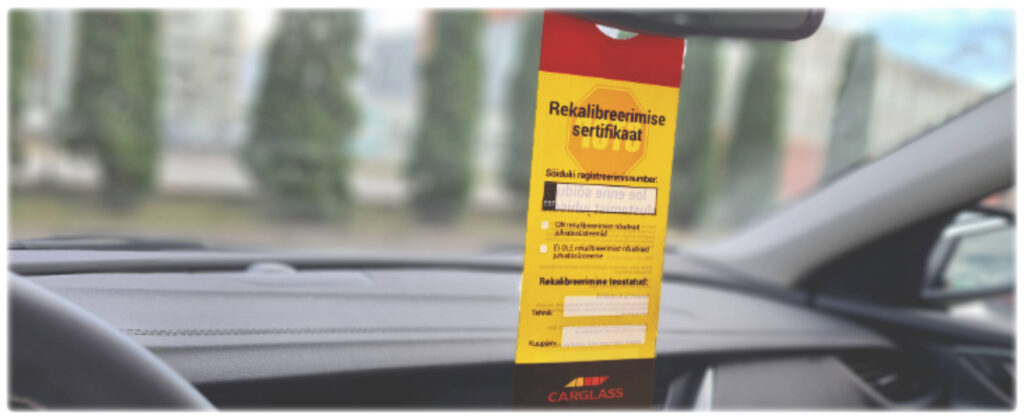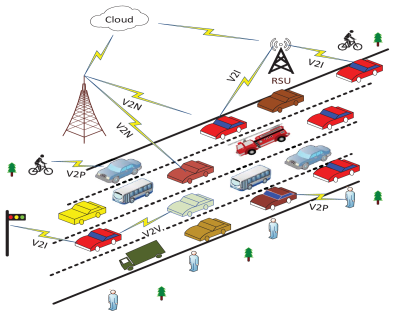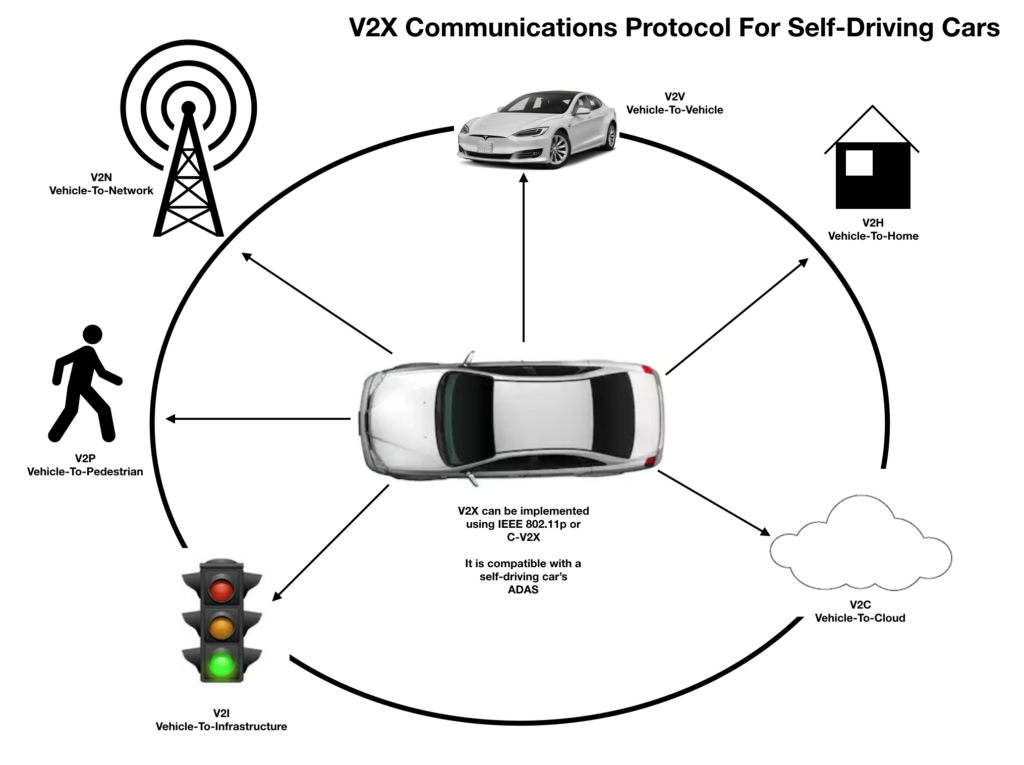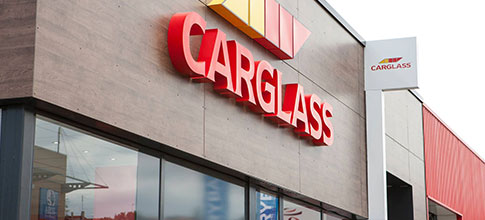ADAS windscreen recalibration
What is an ADAS or windscreen recalibration?
Windscreen recalibration is a process aimed at properly aligning the car’s sensors and cameras so that the advanced driver assistance system or ADAS can work in the intended manner and meet the standards required by the manufacturer. We use Hella Gutmann CSC (camera sensor calibration) equipment and after replacing a front windscreen, we perform a camera recalibration, if necessary, to restore the system to the condition it was in prior to the replacement. See the Carglass® price list.
Why is a proper recalibration so important?
After the windscreen is replaced, the position and angle of the ADAS will be slightly different. If recalibration isn’t performed, the sensors and cameras will no longer measure distance and obstacles correctly, and potential hazards to yourself and others can easily emerge, especially if you’re used to trusting the ADAS!
For example, just a +1° angle may cause a significant measurement error and potential hazard:
- the wrong interpretation of the surrounding environment – an object is closer than it appears to the camera
- the driver gets false alarms or no alert at all, because the sensors and cameras are not working together as they should
- if you trust an ADAS that hasn’t been recalibrated, whether or not you’re aware that it hasn’t been recalibrated, an accident is very likely!
After replacing a windscreen, Carglass® can always recalibrate the ADAS according to the standard originally installed by the manufacturer. We issue a recalibration certificate as confirmation that successful calibration has taken place. Carglass® uses a certified piece of equipment – a Hella Gutmann CSC (camera sensor calibration). It can recalibrate 90% of all existing car models’ ADAS in accordance with the required standards.
What’s ‘under the hood’ of an improved ADAS?
An advanced driver assistance system (ADAS) refers to functions built into modern vehicles to help drivers operate the vehicle safely.
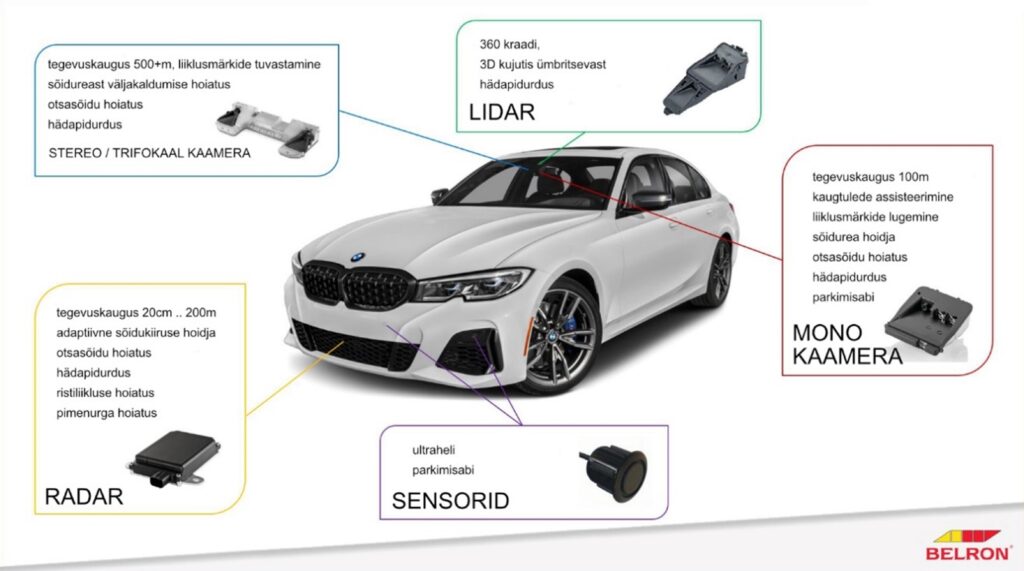 Note: The sensors that are part of a driver assistance system measure the environment around/near the vehicle and the CPU analyses it. The most important cameras are located in the upper part of the front windscreen and are factory calibrated. The ADAS can detect objects at distances ranging from 20 cm to 500+ metres.
Note: The sensors that are part of a driver assistance system measure the environment around/near the vehicle and the CPU analyses it. The most important cameras are located in the upper part of the front windscreen and are factory calibrated. The ADAS can detect objects at distances ranging from 20 cm to 500+ metres.
The three most common driver assistance features by 2025 will be CA Collision Avoidance with braking; LDW Lane Departure Warning and TSR Traffic Sign Recognition.
The recalibration process at Carglass®
There are three widespread types of recalibration, depending on the auto maker’s technology and requirements:
- Static recalibration is performed at the same garage that did the glass replacement. Time needed: 30 min.
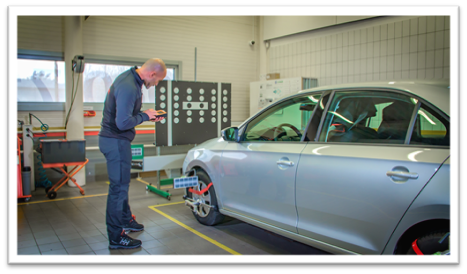
- Dynamic recalibration is a method for recalibrating the ADAS performed while driving the vehicle on the road. Note: The successful completion of the process requires the right weather and road conditions – the pavement markings must be clearly visible! So remember these added requirements (especially in winter) and budget as much as 1.5 hours.
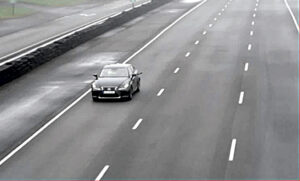
- Combined recalibration is required for car makers where a static recalibration is followed by a dynamic recalibration on the road. (This applies to some Mercedes-Benz models with stereo cameras and other vehicles.) Plan on up to 2 hours.
The recalibration process with windscreen replacement at Carglass® includes the following:
- Reading error codes prior to glass replacement
- Glass replacement + reattaching sensors
- Connecting diagnostic equipment
- Placing vehicle on evenly illuminated, level surface
- Installation of calibration stand in front of car, as instructed by manufacturer
- Execution of the main calibration process
- Follow-up check by a trained glass technician to make sure there are no error codes
- Issuing the recalibration certificate
Complexity of the car’s front windscreen
Technological progress and higher traffic safety requirements means automotive glass has become increasingly sophisticated. The prices of automotive glass and the entire replacement process thus are becoming more costly, as only the right tools and adherence to strictly prescribed procedures ensure a proper restoration to the situation before the loss event and safe driving following the glass replacement! Carglass® world-class equipment and trained specialists and technicians can keep up with developments in the auto industry and most important of all, do so without delay!
Sophisticated features have been developed for modern automotive glass:
Safety and comfort:
- Acoustic glass three-ply PVB (polyvinylbutyral)
- Heated glass
- Hydrophobic glass (self-cleaning, water-repellent)
- Heat-reflecting glass
- Heat-absorbing glass
- Anti-glare glass
- HUD (head up display) information displayed on windscreen
- AR HUD (head up display) augmented reality image displayed on windscreen
- IR Cutglass (used in cameras’ glass covers to cut infrared radiation for natural colour tones)
- Super UV-Cutglass (eliminates 99% of UV from car interior)
Intelligent control:
- Integrated antennas(radio, GPS, V2X)
- ADAS system support (fastenings, distortion-free, safety)
- self-tinting glass
Environment:
- lighter, thinner glass (less pollution)
- photogalvanic glass (technology that allows glass to be made electric)
Style and aesthetics:
- panoramic windscreen (increased spaciousness)
- panoramic roof hatch
- mood lighting glass “Ambient Lighting” (e.g. “starry sky”)
- tinted glass
Automotive glass as a part of the integrated whole:
- windscreen as a significant reinforcement for body rigidity (the windscreen is 30% of the car body’s overall rigidity)
PS: A fast developing trend in the coming years will be acoustic glass, rain sensors, ADAS, and display of information on the front windscreen. For years, car glass has been taking up a bigger area, but it is also thinner and lighter than it was in the past.
Unfortunately, a bigger surface area also increases the risk that a pebble from the road surface will ding the windscreen! For example, the surface area of the glass on a Volkswagen Golf 7 increased by a whopping 33% compared to the previous sixth-generation version.

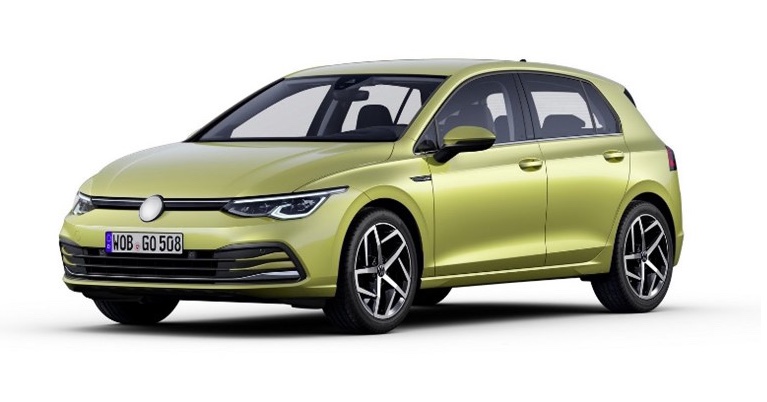
The VW Golf 8 is the first car in the world to make V2X technology standard. V2X (Vehicle to “Everything” communication) allows the vehicle to communicate with its “own kind” – identify others’ location, speed and movement next to it, on the sides, and at intersections that camera or radar technology cannot detect.

